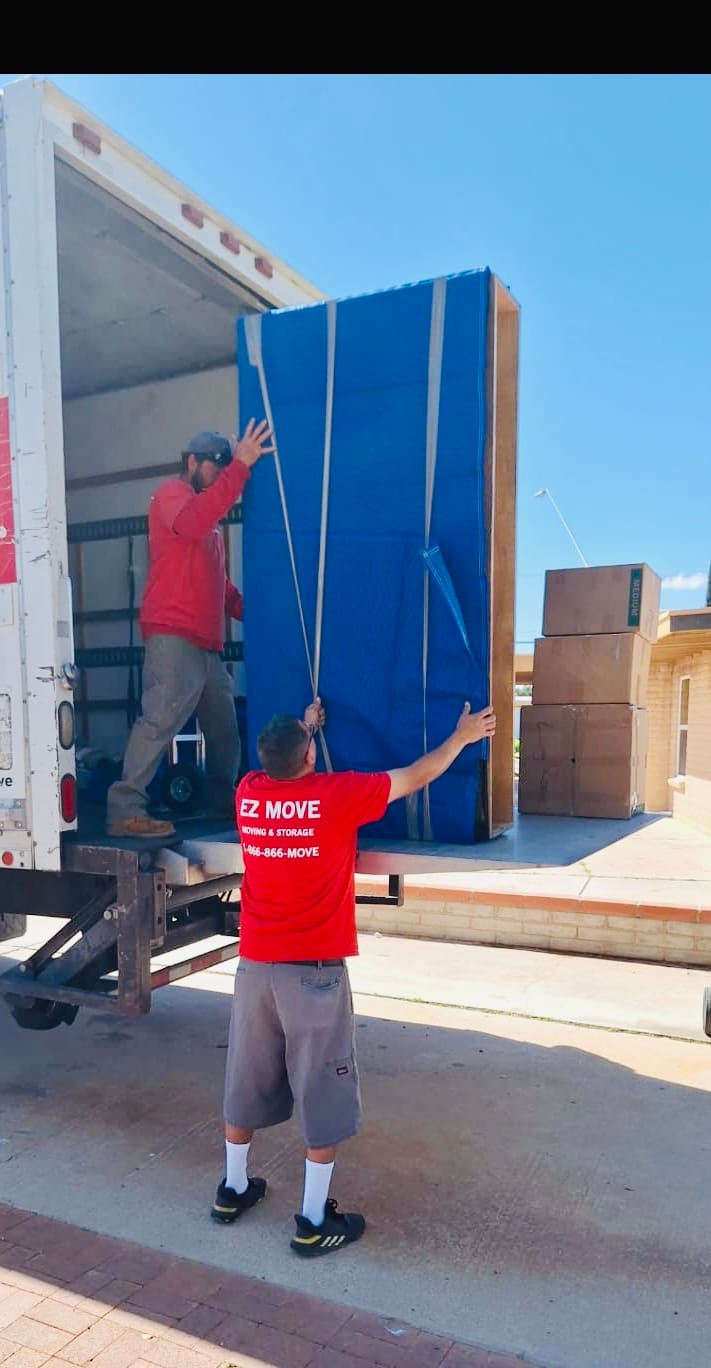Moving can be as tricky as solving a complex puzzle, often filled with unexpected twists and turns. One slip, and you’re knee-deep in broken glassware or a damaged antique, all due to common loading and unloading mistakes. You’re probably thinking, “I’ve got this, it’s just packing and moving boxes, right?” Well, it’s not always as straightforward as it seems. Remember, a well-executed move starts with understanding where things often go wrong. So, curious to know what these blunders might be and how you can avoid them?
Misjudging the Required Time
Underestimating the time needed for loading and unloading your belongings can turn your move into a stressful ordeal, causing unnecessary delays and complications. It’s one of the most common scheduling mistakes people make during the moving process.
You need to consider the size of your move. If you’re moving a four-bedroom house, the time required will be significantly different than if you’re moving from a one-bedroom apartment. Avoid the ‘one-size-fits-all’ approach to planning.
Don’t forget the influence of external factors. Things like weather, parking conditions, and building access can significantly impact the time it takes to load and unload.
Implementing effective time management strategies can help you avoid these pitfalls. Start by making a realistic estimate of how long each task will take, considering all variables involved. Then, build in some extra time for unexpected challenges.
Neglecting Proper Packing Techniques
Don’t underestimate the importance of correct packing during your move; it’s a step that requires careful attention and technique. If you neglect proper packing methods, you’re risking damage to your belongings, which can lead to costly repairs or replacements. So, let’s explore how you can avoid these potential pitfalls and ensure a smoother, safer move.
Importance of Correct Packing
An alarming number of moving mishaps are a direct result of neglecting proper packing techniques, emphasizing the crucial role correct packing plays in a successful move. The key to a smooth relocation often lies in your packing essentials, which include quality packing materials and employing the right techniques. By correctly utilizing storage solutions, you’ll ensure your belongings are safe and secure, minimizing potential damage.
Consequences of Improper Packing
Neglecting proper packing techniques can lead to a myriad of problems during your move, from damaged items and lost belongings to unexpected delays and increased moving costs. If you’re not cautious, damage costs can skyrocket, putting a serious dent in your budget. Improperly packed items are more susceptible to breakage, and you might find yourself filing more insurance claims than you anticipated.
Furthermore, not all insurance policies cover damages resulting from poor packing, which can leave you bearing the full cost. Additionally, time spent on repacking and replacing broken items can cause significant delays in your moving schedule. Therefore, it’s crucial to prioritize proper packing techniques to avoid these potential pitfalls.
Overloading Moving Boxes
You might not realize it, but overloading your moving boxes can cause more trouble than you’d expect. Correct box size selection and proper weight distribution are two fundamental steps you mustn’t overlook in the packing process.
Choosing the right box size isn’t just about fitting your items in. It’s also about ensuring the box can withstand the weight. Overloading a small box might seem like a space-saving solution, but it often leads to boxes breaking, causing potential damage to your belongings and possible injuries during the move.
Weight distribution is a crucial aspect of packing. You might feel tempted to just dump everything in, but that’s a recipe for disaster. Heavier items should be at the bottom, lighter ones at the top. This way, you prevent items from shifting during transit and reduce the risk of the box tipping over.
Inadequate Protection of Fragile Items
Not giving your fragile items the attention they need can lead to heartbreaking losses during a move. You can’t simply place them in a box and hope for the best; proper packing and careful transportation are critical. Let’s discuss how to correctly safeguard your delicate belongings from damage.
Packing Fragile Items Properly
One common misstep during a move is the improper packing of delicate items, which can lead to serious damage. Avoid this by using item categorization as your first line of defense. Group your fragile items together, and make sure they’re clearly marked, so you know to handle these boxes with extra care.
Consider your storage solutions. It’s not enough just to wrap your fragile items in newspaper or bubble wrap. You should also pack them in sturdy boxes, and fill any empty space with additional cushioning material to prevent movement during the move. Also, remember to place heavier items at the bottom and lighter, delicate items on top to prevent crushing. By packing your fragile items properly, you’re taking a significant step towards a damage-free move.
Ensuring Safe Transportation
Despite your best efforts in packing, inadequate protection during transportation can still put your fragile items at risk. Vehicle suitability is a key factor. Make sure your vehicle can comfortably accommodate all your belongings without the need for over-stacking. Overloading can cause serious damage, especially to delicate items.
Route planning is also crucial. You’ll want to avoid roads with many potholes, sharp turns, or steep inclines. Unexpected jolts and movements can jostle your items, leading to potential breakage. Consider investing in additional protective materials like bubble wrap or moving blankets for extra cushioning during the journey. Remember, it’s not just about getting your items from point A to B, but ensuring they arrive safely.
Incorrect Lifting and Carrying
A major pitfall in the moving process is incorrect lifting and carrying, which can lead to severe injuries if you’re not careful. This is where preventing back injuries comes into play. You must understand that lifting heavy objects requires proper technique and strength. Don’t attempt to do it all on your own if you’re not confident or physically capable.
Instead, consider training movers who are well-versed in the correct techniques of lifting and carrying heavy items. They know how to maintain the right posture to protect their back, knees, and other vulnerable areas while ensuring the safety of your items. Professional movers are trained to handle various weights and sizes of boxes or furniture, making them less prone to injury.
And remember, it’s not just about how you lift, but also how you carry. Avoid twisting or turning your body while carrying heavy objects. Keep the load close to your body and take small steps. If you need to change direction, move your feet, not your waist. The correct lifting and carrying methods can significantly reduce the risk of injuries and make your moving process smoother and more efficient. Don’t underestimate the importance of this aspect of moving.
Disorganized Unloading Process
While you might have mastered the art of correct lifting and carrying, it’s crucial not to overlook the importance of a well-organized unloading process during your move. A haphazard approach can lead to inefficiencies, wasted time, and even potential damage to your belongings.
Your first step in preventing a disorganized unloading process should be to establish a clear unloading sequence. Consider the layout of your new space and prioritize unloading the items you’ll need immediately, like furniture for sitting and beds for sleeping. This sequence will not only make your first night in your new home more comfortable but also keep the pathway clear for the rest of the unloading process.
Space optimization is another key aspect in maintaining an organized unloading process. You don’t want to end up with boxes cluttering your space, impeding your movement. Therefore, it’s essential to have a clear plan about where you’re going to place each item before you start unloading. Remember, it’s much easier to move things around when they’re still in the truck than after they’ve been unloaded.
Ignoring the Importance of Labels
In the hustle and bustle of moving, you might underestimate the significance of properly labeling boxes, but this can often lead to a chaotic and inefficient unloading process. Overlooking the labeling essentials can result in a disoriented move, where finding specific items becomes a herculean task.
Labeling is not just about marking boxes with generic terms like ‘kitchen’ or ‘bedroom’. It’s about being specific and detailed. For instance, indicate if a box contains ‘glassware’ or ‘books’. This ensures you’re not left frantically searching for your favorite novel or coffee mug.
The benefits of labeling extend beyond just organization. It also aids in prioritizing which boxes to unpack first. You can label boxes as ‘open first’ or ‘unpack last’. This way, you’ll have the necessary items handy, right from the start.
Labeling can safeguard your delicate items. Marking boxes as ‘fragile’ or ‘handle with care’ can prevent potential damage.



